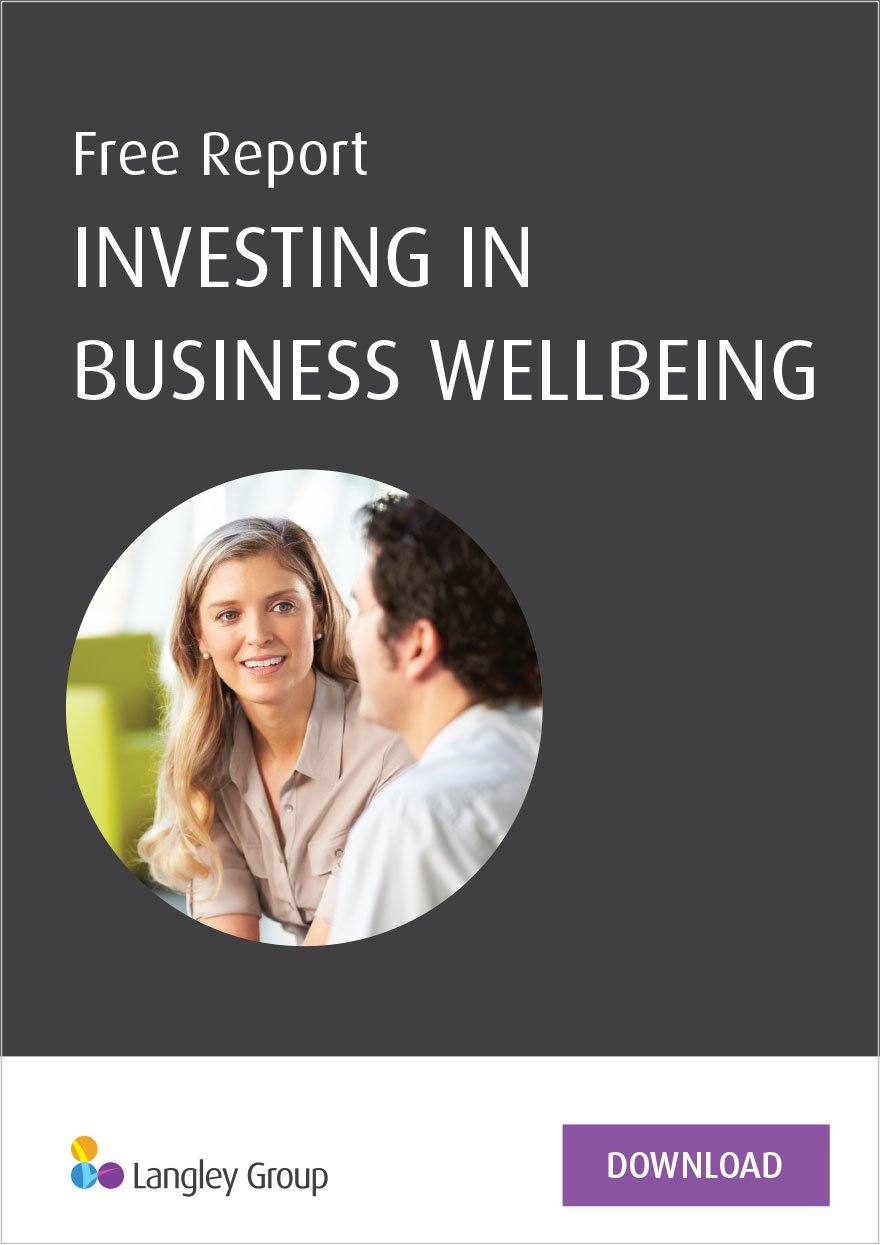
Empirical research shows that wellbeing is a prerequisite for sustaining success for people and their workplaces, not simply a happy benefit.
When people feel happy, engaged and purposeful at work they typically do far better and are more committed than those who do not. They perform better, get promoted faster, stay in their jobs longer and take fewer sick days. This contributes to a more positive, thriving and sustainable business. Yet many human resource managers and executives may not be aware of this reliable and emerging evidence base or fail to take full advantage.
Analysis by Gallup researcher Jim Harter and his colleagues on the relationship between individual and organisational wellbeing and performance reveals that employee wellbeing leads to workplace engagement, which increases productivity, resulting in better business outcomes and profit. When leaders can create a positive culture that promotes wellbeing, these outcomes are magnified.
While often seen as an expense, an investment in people’s wellbeing is actually an asset.
Investing in Engagement and Wellbeing
The latest figures from Gallup show 87% of employees worldwide are unhappy or disengaged. In other words, only one in eight workers are actively involved, enthusiastic and committed to their jobs and likely to be making positive contributions to their workplace.
(Engagement is higher in countries with developed markets, for example 30% in the US and 24% in Australia and New Zealand, where people are more able to find jobs that make use of their strengths and skills.)
Every unhappy employee represents significant costs in unrealised productivity. Gallup estimates that active disengagement—worker unhappiness that extends to undermining the efforts of engaged coworkers—is costing organisations $450 to $550 billion per year in the US alone.
Engaged workers display more energy, vitality and motivation at work. They are three times as likely to be thriving in their lives overall. Those who are engaged and thriving, maintain stronger work performance—even during difficult times. Employee engagement is also a predictor of company performance even in a tough economy. Organisations with satisfied employees do better on the stock market than those whose workers are less satisfied, according to London Business School professor Alex Edmans. Those appearing on Best Places to Work lists achieve above-average share-market performance.
Research shows that happy and engaged employees reap tangible businesses gains:
- 147% higher company earnings. Companies with highly engaged workforces outperform peers by 147% in earnings per share (EPS) and seem to recover their EPS faster (Gallup, 2013).
- 65% greater share-price. Small to medium sized enterprises with highly engaged employees achieve 65% greater share-price increase (Queens School of Business and Aon Hewitt, 2014).
- 21% more profit. Workgroups with the highest level of engagement are more profitable (Gallup, 2013).
- 16% better employee performance overall as reported by their managers (HBR, 2012).
The bottom line is that workplace engagement is vital to accelerating performance and achieving sustainable growth in organisations, and wellbeing is a key driver. For example, the productivity difference between high and low wellbeing employees can be as much as 30%. Employers who invest in programs to engage their workers and improve their wellbeing have a clear competitive advantage.
Global human capital trends show that today’s mobile workforces require an evolving social contract between employer and employee where workers voluntarily contribute their best work and feel re-engaged on a daily basis. Equipping leaders with the tools to build a positive culture and boost employee wellbeing enables them to engage and energise people to get the best from them every day.
Building a workplace culture that consistently engages and energises people is complex, yet one intervention can be particularly impactful. Gallup estimates that in workplaces where managers focus on people’s strengths, a key driver of engagement and wellbeing, active disengagement can be practically eliminated, and engagement doubled.
Whole Person / Whole Business Wellbeing
Many organisations tackle engagement and wellbeing separately. While engagement is typically ranked a critical issue, wellbeing is sometimes seen as a nice to have rather than a building block of organisational culture. Often they focus on one aspect of wellbeing—physical health—rather than looking at the whole person, or whole organisation. Their goal is usually to help people get healthy at work or stay healthier longer through a range of interventions or health provisions. While initiatives certainly reap benefits, focussing on wellness is not as effective or comprehensive as addressing wellbeing.
When looked at holistically, mental health or wellbeing at work means thriving physically, emotionally, psychologically, socially and as a business.
The benefits are reciprocal. Individual wellbeing can have a significant impact on business wellbeing, and a thriving, engaged workplace can in turn positively impact employee wellbeing. By enhancing all these factors and threading them into every aspect of leadership and culture, organisations can realise more value from their initiatives and for their people.
For more about the benefits of business wellbeing, download our free report.






